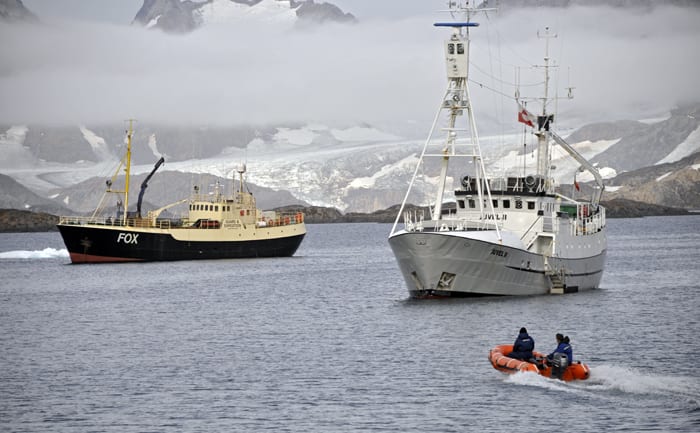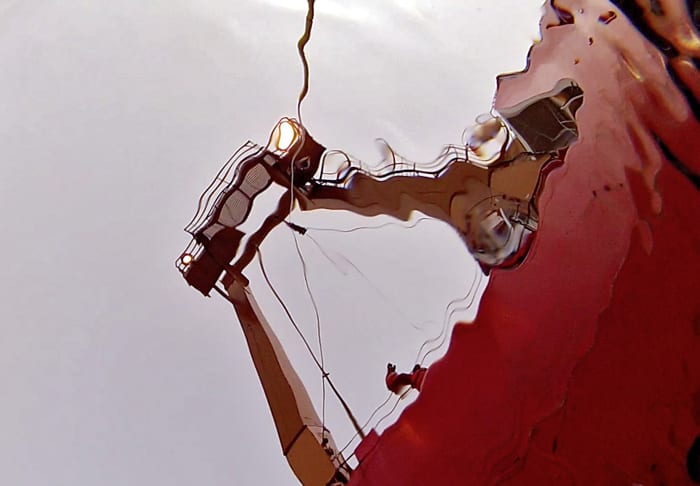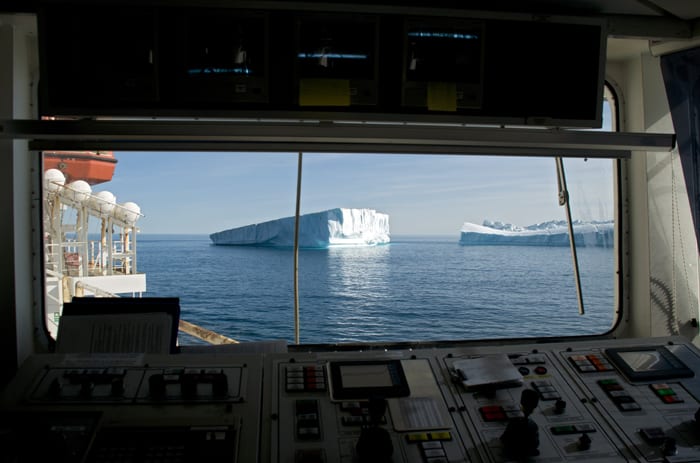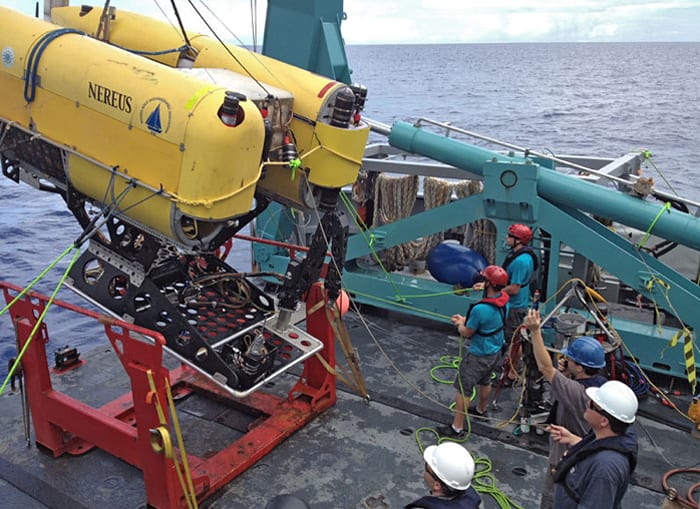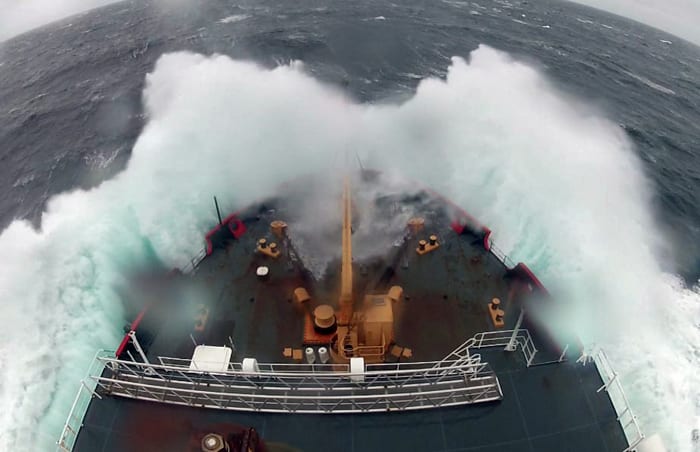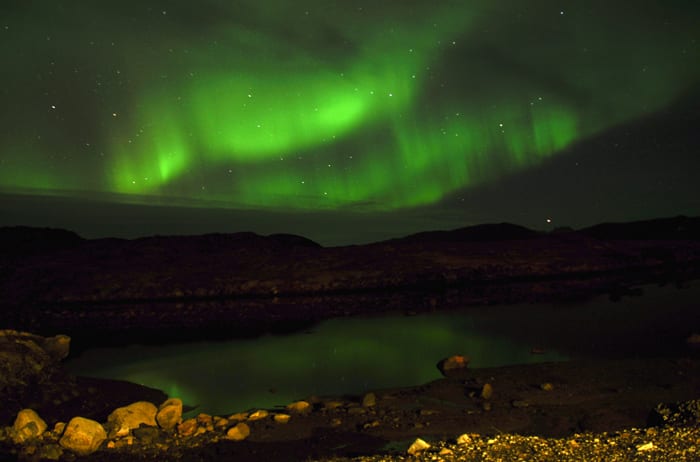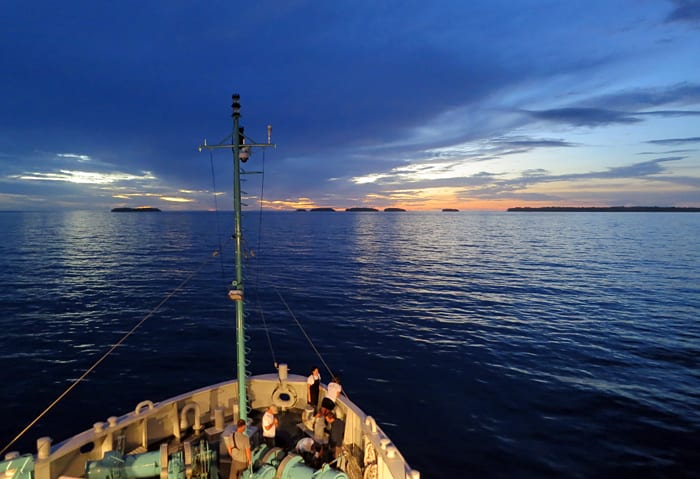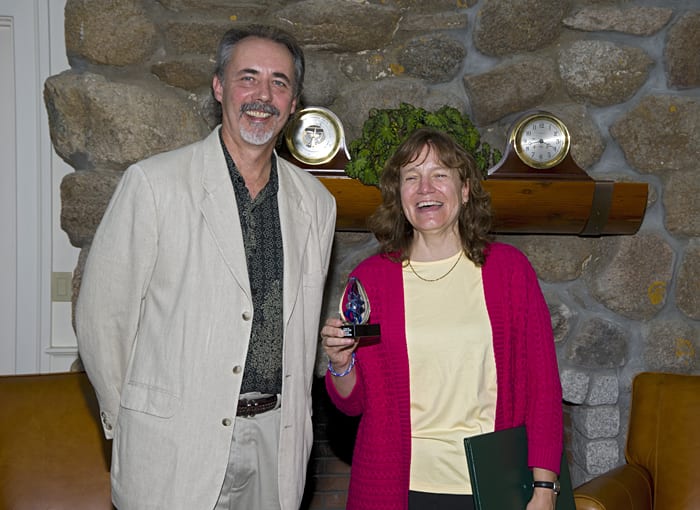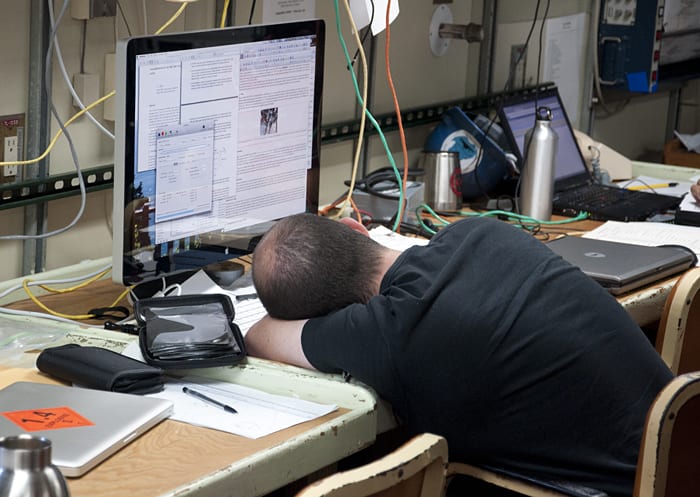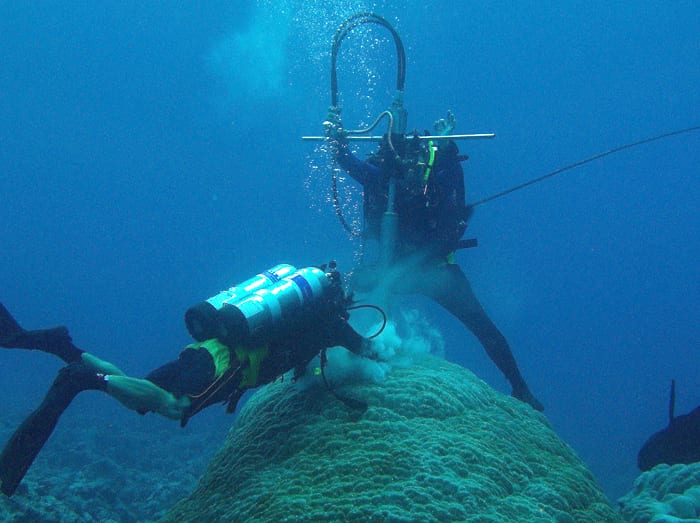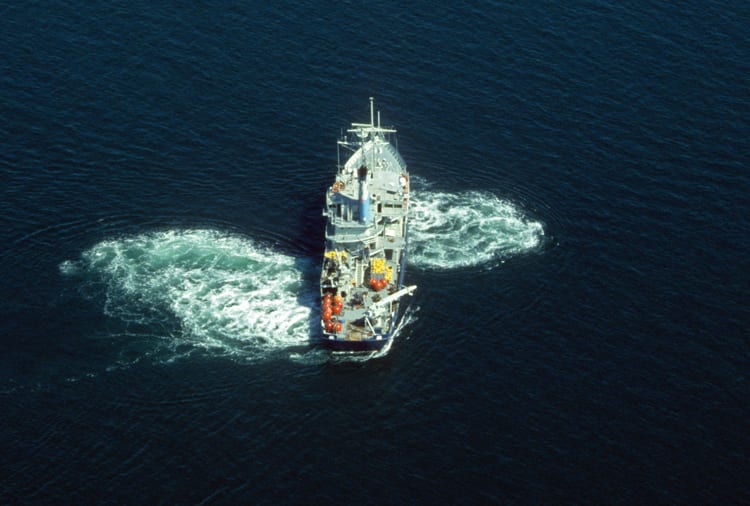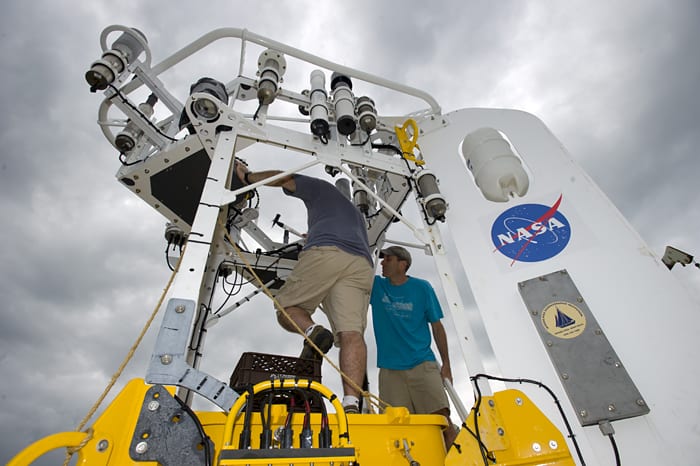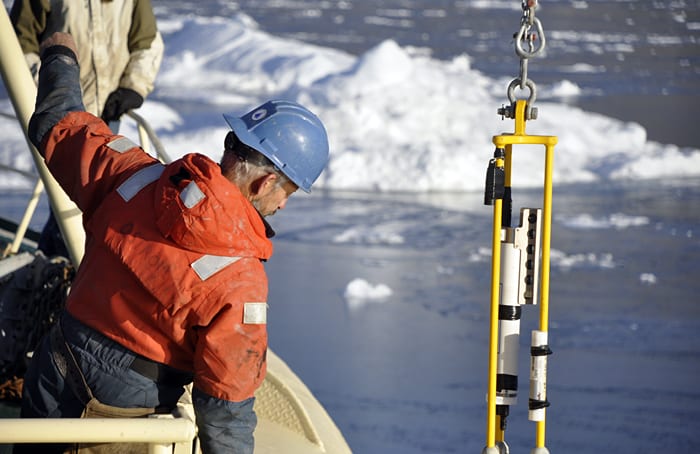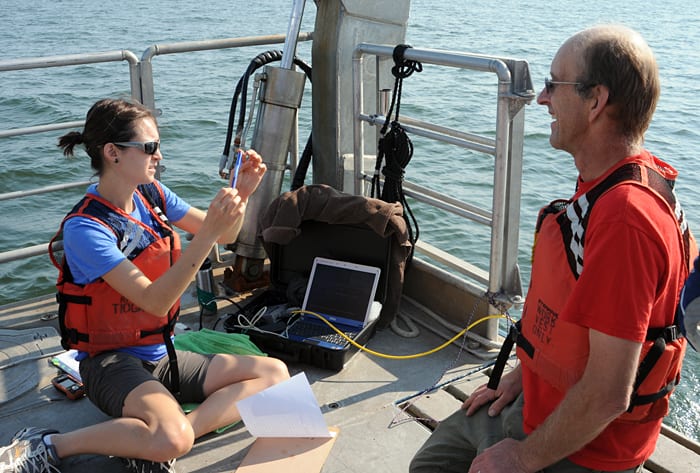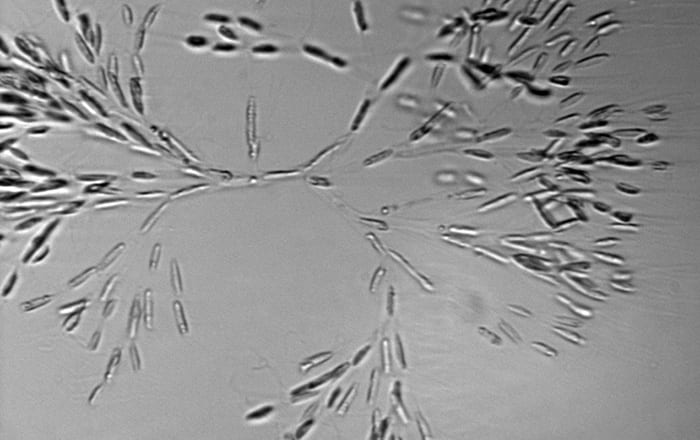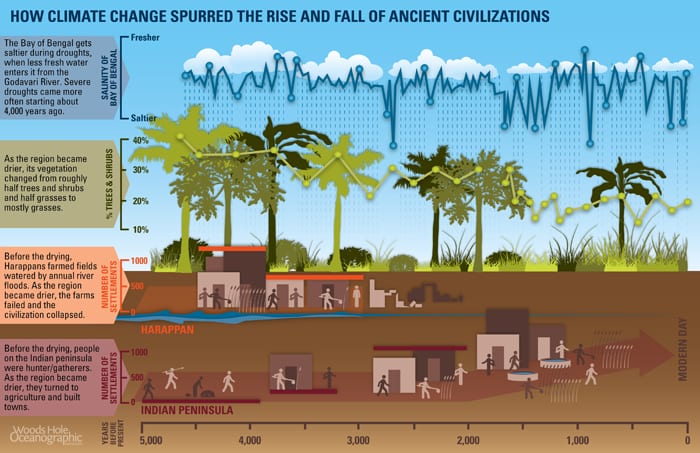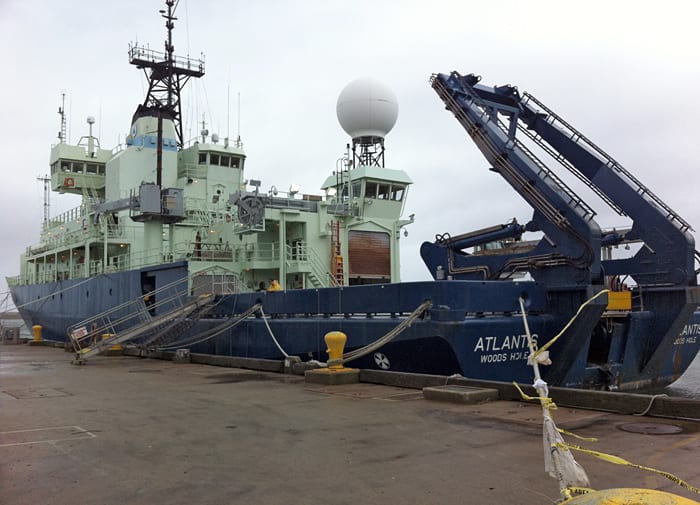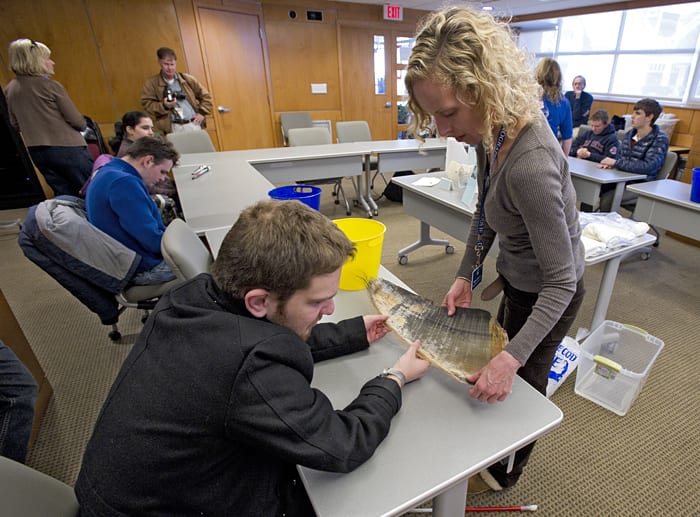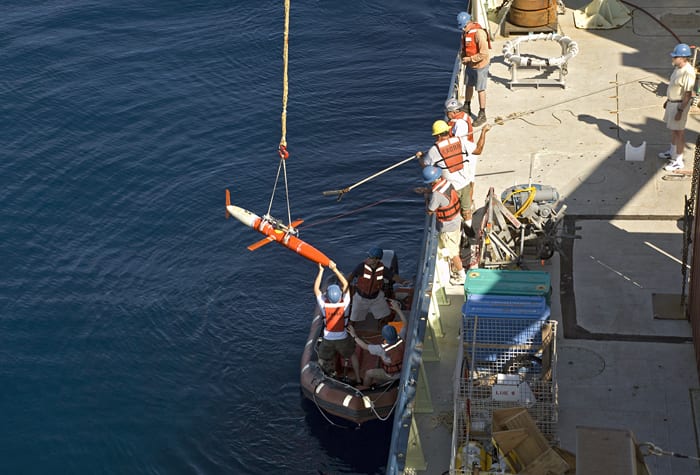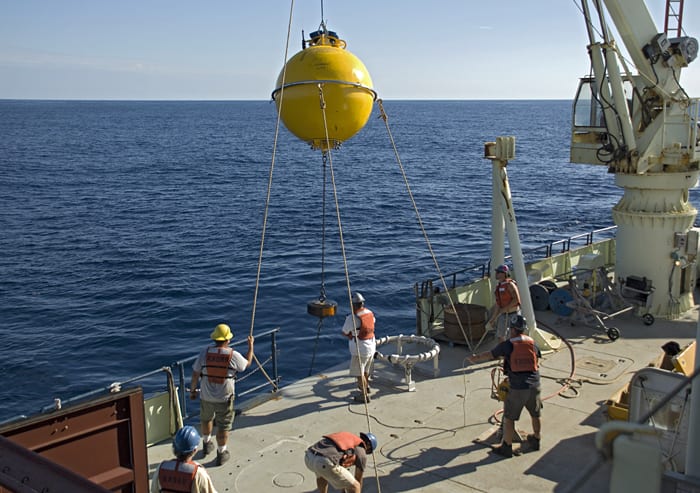Multimedia
Planes, Trains and Snowmobiles
WHOI oceanographer Fiamma Straneo, along with ten colleagues from WHOI and abroad, called the 130-foot research vessel Fox home during a two week expedition in September off the coast of…
Read MoreThe View from Below
A camera mounted on a rosette sampler captured this unusual view of the starboard A-frame of U.S. Coast Guard Cutter Healy from the water of the Beaufort Sea north of…
Read MoreSafe Passage
Icebergs were a common sight around the British icebreaker James Clark Ross during a 30-day summer research cruise along Greenland’s east coast to the high-Arctic island of Spitsbergen. The expedtion, led…
Read MoreLight Touch
The hybrid remotely operated vehicle (HROV) Nereus normally operates in one of two modes: with a fiberoptic tether that allows technicians to control the vehicle from the surface, or as…
Read MoreBi-coastal Battering
While Hurricane Sandy was lashing the East Coast, a low-pressure system was making life difficult for the scientists and crew of the U.S. Coast Guard Cutter Healy. The team was…
Read MoreCurtains of Light
The aurora borealis, or northern lights, danced across the night sky during a recent expedition by physical oceanographer Fiamma Straneo to southeastern Greenland. Straneo and her colleagues were there to…
Read MoreAnother Day in Paradise
Scientists and crew enjoyed the sunset near Woleai Atoll in Micronesia, several hundred miles south of Guam, during the last week of October. Researchers from WHOI, the University of Hawai’i,…
Read MoreAn Unusual Coffee Table
On an expedition off the Galápagos Islands in 2010, scientists used a dredge attached to a cable to collect samples of volcanic rocks from the seafloor. When the dredge returned to…
Read MoreAmy Bower Receives Award
In October 2011 the Center for Vision Loss, an agency serving visually impaired people of eastern Pennsylvania, awarded their first-ever “Chrysalis Award” to WHOI scientist Amy Bower. The award ,…
Read MoreNo Vacation
Just because it’s known as a research “cruise” doesn’t mean life is easy for the scientists, engineers and students on board. During a recent, month-long expedition on R/V Knorr, MIT/WHOI…
Read MoreMeasuring River Chemistry
Analyzing the water’s chemistry tells about the land the river flows over, the health of the watershed, and changes caused climate change or human activities.
Read MoreTaking the Temperature
During a recent trip to islands of Micronesia, WHOI marine chemist Konrad Hughen and his team surveyed shallow water reefs to study the response of corals to global warming and…
Read MoreOn a Dime
George Tupper, a WHOI engineer and private pilot, had often thought about photographing the WHOI-operated research vessel Knorr from the air to capture the ship turning on its axis. Tupper’s opportunity…
Read MoreMeasuring Salt from Sea and Space
University of Connecticut scientist Jim Edson (left) and WHOI technician Steve Faluotico install an instrument on a buoy prior to a cruise to the saltiest spot in the North Atlantic…
Read MoreA Sea Change
WHOI engineer Will Ostrom deploys a mooring in Sermilik Fjord in southeastern Greenland in September, 2012. Instruments on the mooring will record water temperature, salinity, and current speed and direction…
Read MoreA Tangled Problem
MIT/WHOI Joint Program student Julie van der Hoop and marine biologist Michael Moore confer during a recent expedition on R/V Tioga. The pair was using a tensiometer to measure drag forces created by…
Read MoreBlooming Under Ice
This delicate fan-shaped colony of a golden-colored algae called Dinobryon was found in a surprising place—beneath sea ice in the Chukchi Sea. Scientists had assumed ice blocked sunlight that microscopic…
Read MoreCulture and Climate Change
Climate change—particularly changes in the monsoon—prompted dramatic changes in how the peoples of ancient India lived. WHOI geologist Liviu Giosan, MIT/WHOI Joint Program student Camilo Ponton, and colleagues gathered evidence…
Read MoreReady for Sandy
When one of the big ships is in port during heavy weather, they get all the best points on the dock to tie off. Standard practice calls for two bow…
Read MoreOcean Work Hats
When scientists leave instruments in the ocean to do long-term measurements, they need a way to keep their gear afloat. One way to keep them from sinking is to use…
Read MoreGetting in Touch with Science
A student from Perkins School for the Blind examines a piece of whale baleen with the help of Karen Damelio, an assistant at WHOI’s Ocean Exhibit Center. Several Perkins students…
Read MoreGliding Underwater
An autonomous underwater glider, is recovered to the R/V Knorr. The glider, preprogrammed with navigation waypoints before deployment, maneuvers through the ocean without an external propulsion system, traversing the upper…
Read MoreNew House on the Block
In August, scientists and engineers began moving into the new 26,000-square-foot Laboratory for Ocean Sensors and Observing Systems building on WHOI’s Quisset campus. The facility contains lab and office spaces for…
Read MoreData Retrieval
A Subsurface Mooring Operations crew on a cruise to Line W recovers a buoy that collected data for the Access to the Sea program. Named in memory of Val Worthington,…
Read More
